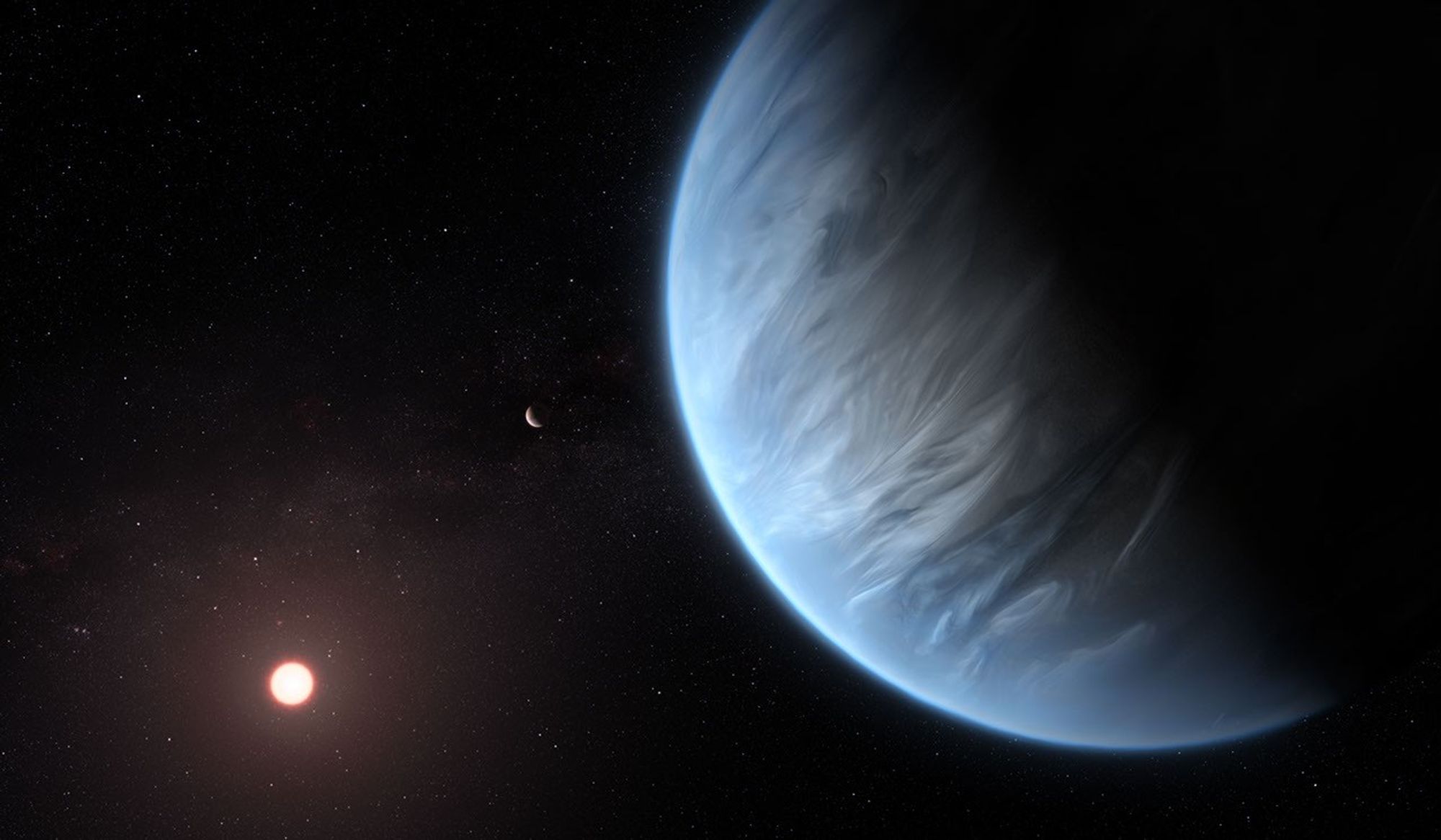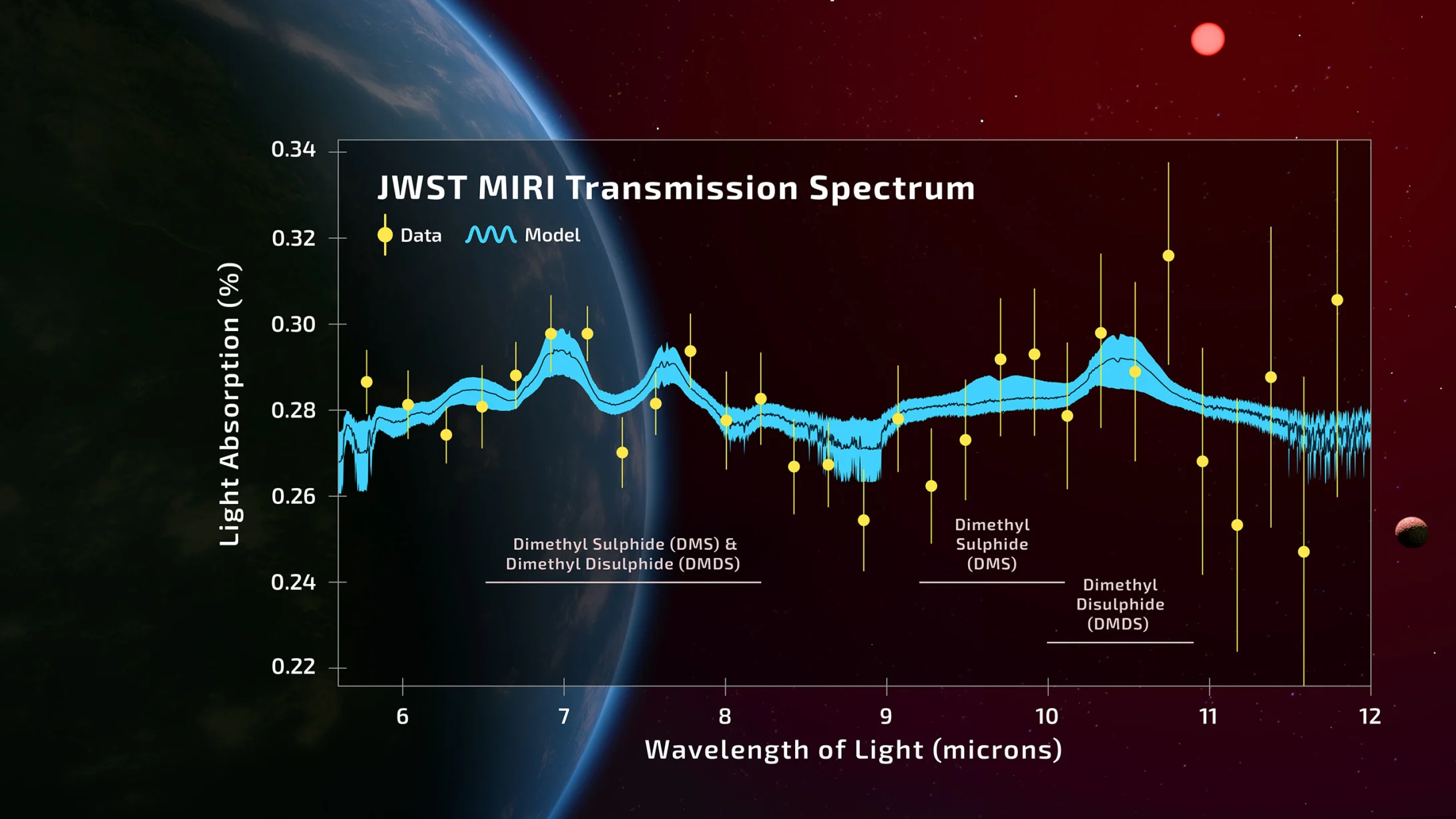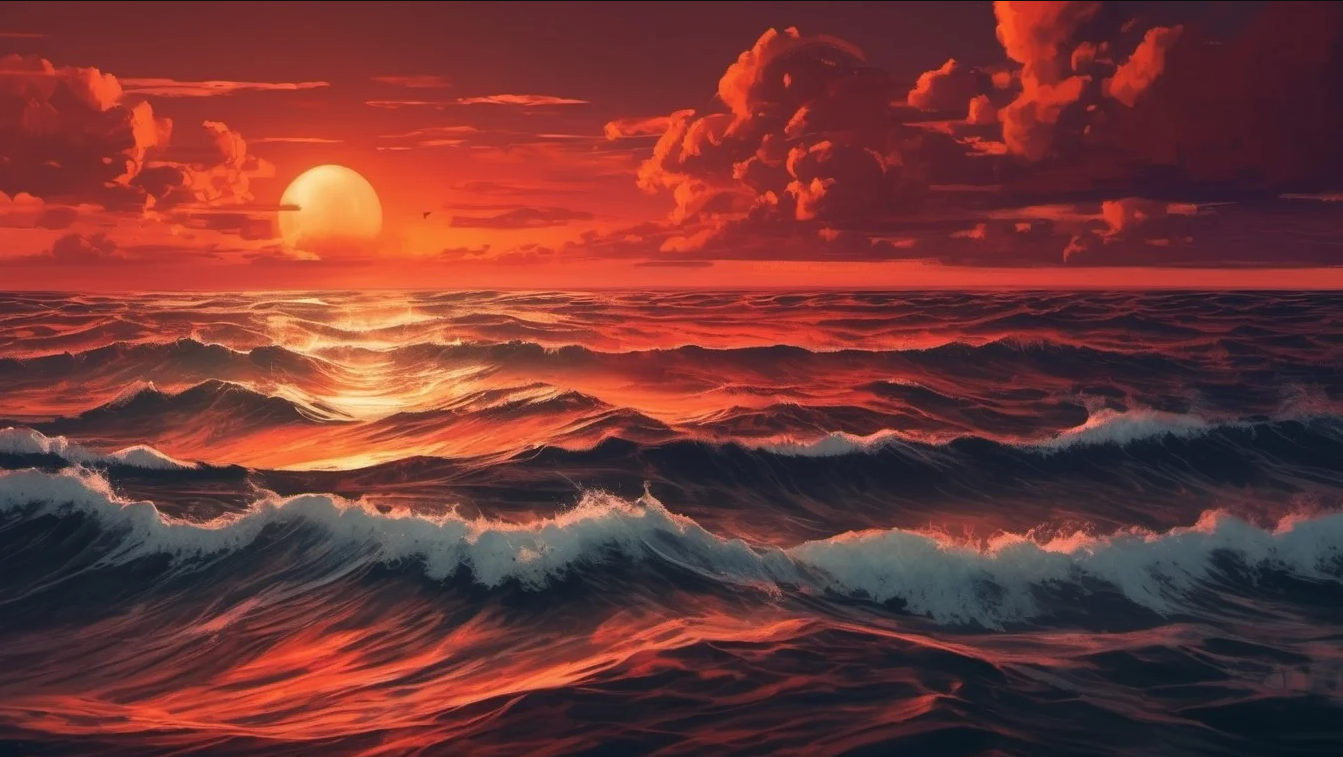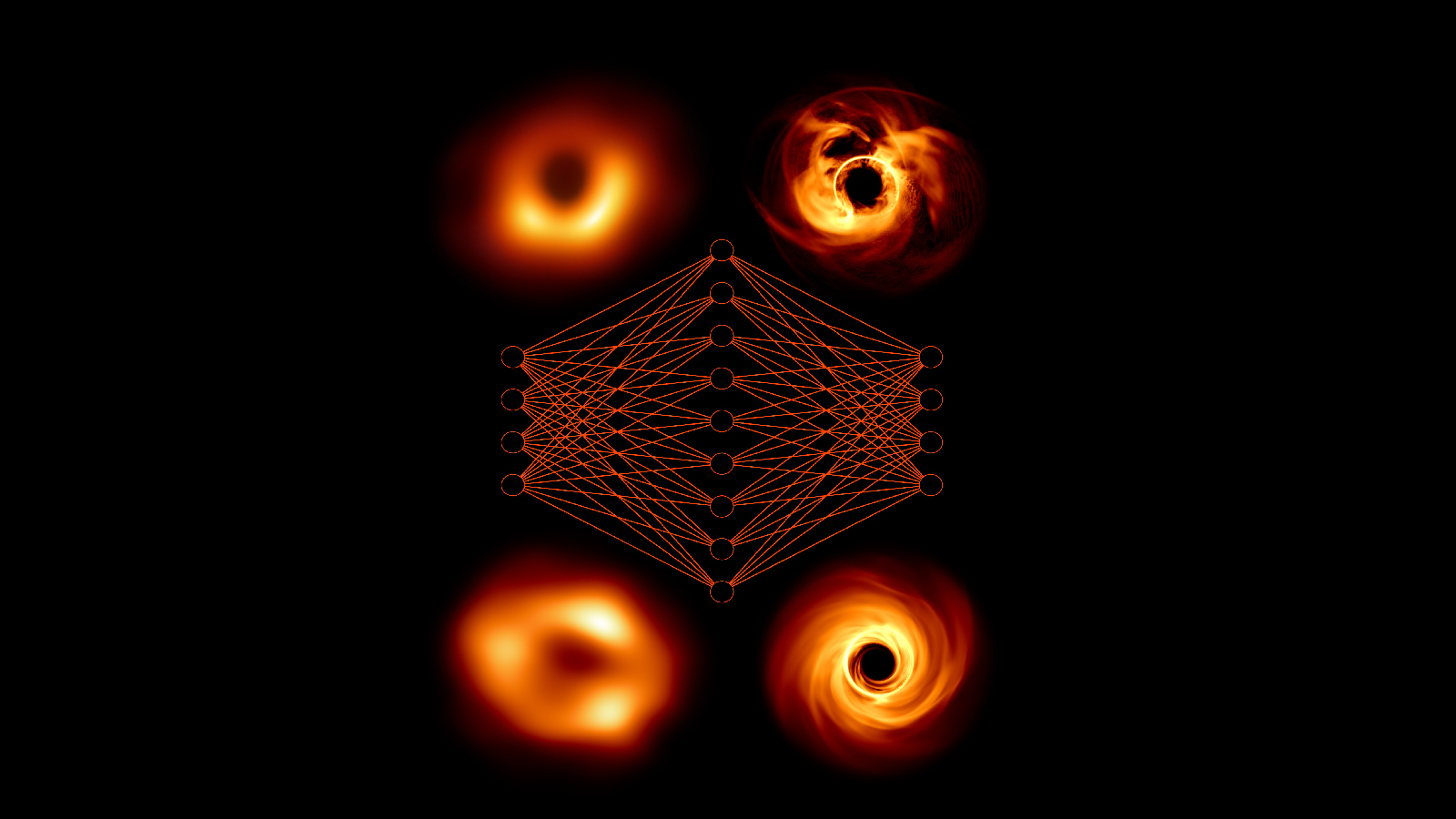Did we actually find signs of alien life on K2-18b? 'We should expect some false alarms and this may be one'
"A needle in the haystack, or just a sharp piece of hay?"

Last week, a team of astronomers ignited global headlines by announcing the "strongest evidence yet" for life beyond our solar system, ushering in what appears to be the latest chapter in humanity's search for aliens — but is it?
The team's findings, based on their analysis of James Webb Space Telescope (JWST) data, point to an abundance of dimethyl sulfide (DMS) molecules in the atmosphere of a planet known as K2-18b, which circles its star about 120 light-years from Earth in the Leo constellation. Because DMS is almost exclusively produced by life forms like marine algae on Earth, astronomers consider it a potential "biosignature" in the search for life — past or present — elsewhere in the universe. According to Nikku Madhusudhan of the University of Cambridge and his colleagues, the best explanation for the presence of these molecules — DMS and its chemical cousin dimethyl disulfide, or DMDS, which is also a potential biosignature — on K2-18b is therefore that the planet could be an ocean world "teeming with life."
"These are the first hints we are seeing of an alien world that is possibly inhabited," Madhusudhan told reporters in a press briefing. "This is a revolutionary moment."
However, the excitement sparked by the announcement was quickly tempered by a wave of caution, with scientists emphasizing that the results are still preliminary and come with several caveats. Chief among them is the fact that Madhusudhan and his team reported their DMS detection with a three-sigma statistical significance, indicating a 0.3% chance of it being due to random chance. Experts point out that this falls short of the typical five-sigma standard required for a scientific discovery to minimize false positives, which translates to a 0.00003% chance that the findings are due to a statistical fluke.
"As Carl Sagan used to say, life is the hypothesis of last resort."
Christopher Glein, planetary scientist at the Southwest Research Institute.
Additionally, the data gathered for the new K2-18b study seems to push the JWST to its limits, and critics say the researchers might have used a biased model that effectively artificially inflated the significance of DMS wafting in the planet's atmosphere.
"Concluding that DMS has been detected appears to be premature," Manasvi Lingam, an astrobiologist at the Florida Institute of Technology, who wasn’t involved in the new research, told Space.com. The latest research "involves new data, but until that data has been analyzed independently by others, we cannot make any claims about K2-18b's habitability and the possible existence of life."
Eddie Schwieterman, an assistant professor of astrobiology at the University of California, Riverside, who was not involved with the new research, said he was particularly surprised that ethane wasn't found alongside the possible DMS or DMDS signal. The host star's UV radiation should break down the molecules and form abundant ethane as a byproduct, he explained, meaning its absence in Madhusudhan's data doesn't align with scientists' understanding of planetary atmospheres.
Breaking space news, the latest updates on rocket launches, skywatching events and more!
"Either our models are in error, or the DMS/DMDS might not exist," Schwieterman told Space.com. "Finding life outside the solar system won't be a 'one and done' detection — along the way, we should expect some false alarms and this may be one."
Fresh eyes on old data
Madhusudhan and his colleagues first reported a possible DMS detection on K2-18b in 2023, using the JWST then as well. That finding met its own share of skepticism, and was not upheld by independent analyses of the same data. However, this latest study utilized a different JWST instrument and analyzed the planet at different wavelengths, which the research team claims provides a stronger and clearer indication of DMS/DMDS molecules.
Still, many scientists are once again injecting doses of skepticism on the high-profile claim, emphasizing the need for rigorous scientific scrutiny because there is potential for more ordinary, non-biological explanations for the sought-after molecule in K2-18b's atmosphere.

Christopher Glein, a planetary scientist at the Southwest Research Institute in Texas who was not involved with the new study, said his reaction to the announcement "is one of interest but restraint."
"We need to resist the temptation to find a smoking gun," he told Space.com. "The search for life is hard. For a convincing case to be made, multiple self-consistent lines of evidence will need to be assembled."
Other critics argue Madhusudhan and his team engaged in "statistical hacking" by building a selective model where DMS and DMDS are the only explanations for half of K2-18b's atmospheric light spectrum, thereby artificially boosting the molecules' significance.
"Reproducibility is a hallmark of science. We need to see that moving forward," said Glein. "Did they find a needle in the haystack, or just a sharp piece of hay?"
Echoes of life or lifeless chemistry?
Before a planet can be inhabited, it must be habitable.
In 2021, K2-18b's initial atmospheric composition had led Madhusudhan and his colleagues to suggest the planet harbors a warm ocean blanketed by a hydrogen-rich atmosphere. Key to that conclusion was the detection of carbon dioxide, or CO2, in the planet's atmosphere, which led the team to suggest the world is potentially capable of hosting microbial life.
However, more recent studies have questioned that CO2 calculation, raising the possibility that the planet may be too close to its star to support stable liquid water on its surface.
"As much as we want it to be, I am not sure that K2-18b is habitable," said Glein.
Scientists are also at a very early stage in understanding the chemistry of sub-Neptune exoplanets like K2-18b, he said, which means we aren't so sure yet what the abiotic background, or non-biological composition, of these worlds should look like. "These things take time — we've learned in recent years that an anomaly does not necessarily mean life," said Glein.
Matt Genge, a planetary scientist at the Imperial College London, who was not part of the new research, noted that more context and possible formation pathways are needed to explain the abundance of detected molecules in the planet's atmosphere before scientists can confidently attribute the signal to life rather than non-living chemistry or geology.
"When a discovery is as monumental as the discovery of alien life, the bar is set very high for convincing evidence," said Genge. "As a geologist who studies planets, I question the assumption that these molecules can only be produced by life."

If future observations determine that DMS or DMDS is indeed present in the planet's atmosphere, "then it's possible we might be seeing evidence of some cool chemistry rather than biochemistry," said Glein. "As Carl Sagan used to say, life is the hypothesis of last resort."
There is also disagreement about whether DMS should even be considered a reliable biosignature, astrobiologist Michaela Musilova, who was also not involved in the new research, told Space.com. A recent study suggested atmospheric interactions between UV radiation, methane and hydrogen sulfide could lead to a buildup of DMS and DMDS in the upper atmosphere of an otherwise inhospitable world.
Traces of DMS have also been detected on a cold comet devoid of life, which "suggests that these types of molecules could be produced by chemical processes that we are not yet familiar with," said Musilova.
"Until findings are confirmed by multiple teams and through multiple methods, everything directly related to biosignatures and detecting alien life remains, for me, in the 'potential discovery' category," she added.
The search for extraterrestrial life is sprinkled with tantalizing hints that have often ultimately turned out to have non-biological explanations. For instance, a potential signal of phosphine — also considered a possible biosignature — in the clouds of Venus ended up being a false alarm. The complexity of exoplanetary atmospheres and the limitations of current observational technology mean that interpreting signals from light-years away is a delicate and challenging process.
Even if K2-18b doesn't ultimately prove to host life, the techniques and insights gained from studying it will be useful for future investigations of other potentially habitable worlds, said Musilova. "Every new set of data in the astrobiology field is valuable and it can help us advance towards better understanding whether alien life exists elsewhere in the universe and how our life came to be on Earth."
"I just want to make sure that we balance our enthusiasm with a proper dose of patience," said Glein. "It's going to be a fun ride, but we should fasten our seatbelts."
Join our Space Forums to keep talking space on the latest missions, night sky and more! And if you have a news tip, correction or comment, let us know at: community@space.com.

Sharmila Kuthunur is a Seattle-based science journalist focusing on astronomy and space exploration. Her work has also appeared in Scientific American, Astronomy and Live Science, among other publications. She has earned a master's degree in journalism from Northeastern University in Boston. Follow her on BlueSky @skuthunur.bsky.social
You must confirm your public display name before commenting
Please logout and then login again, you will then be prompted to enter your display name.
